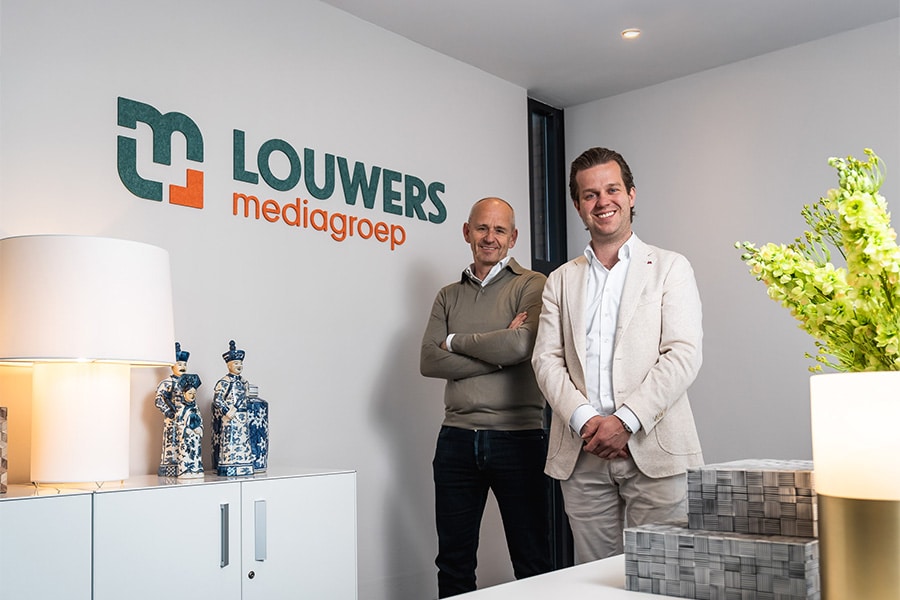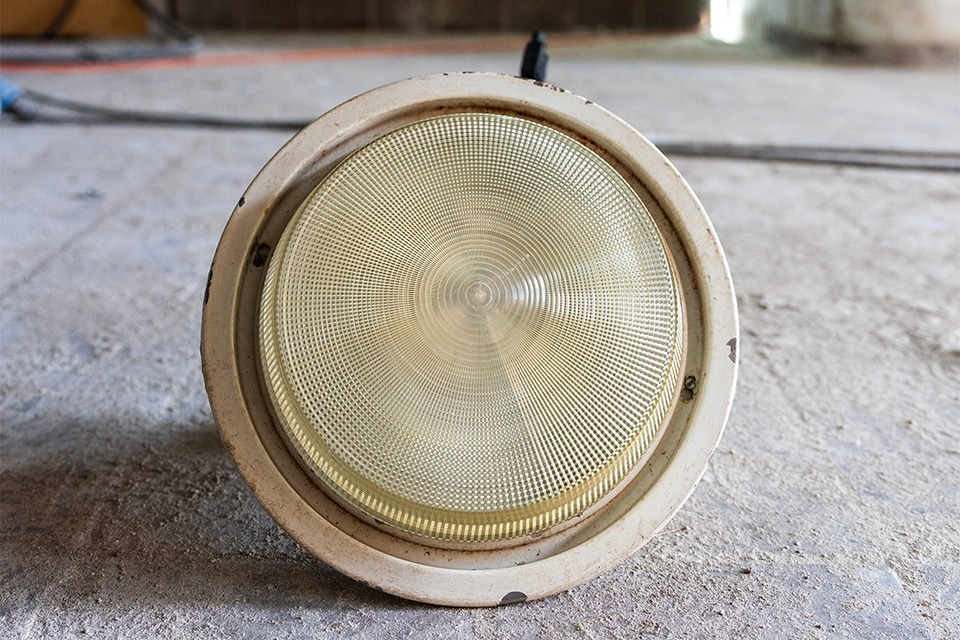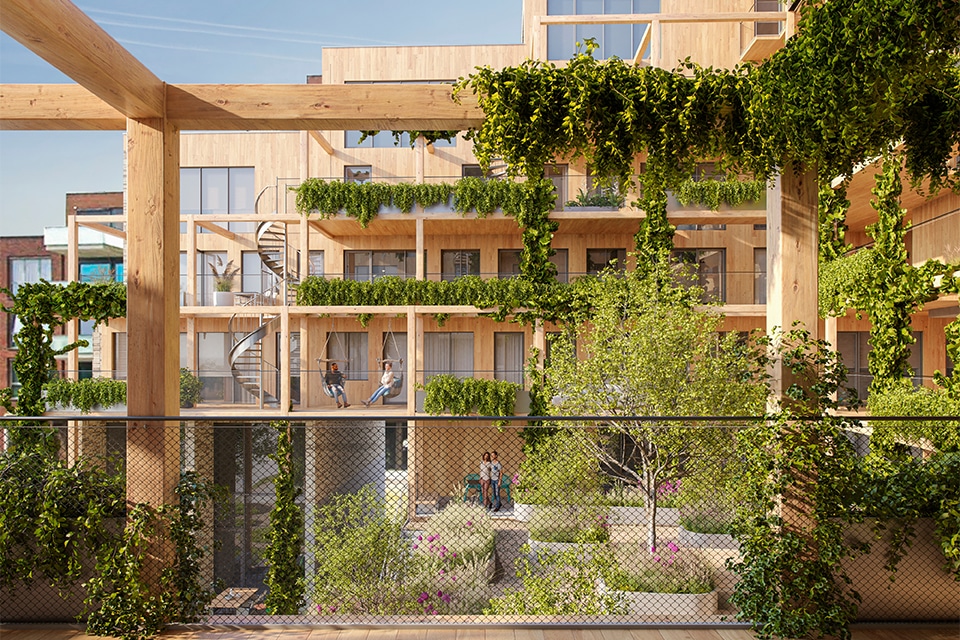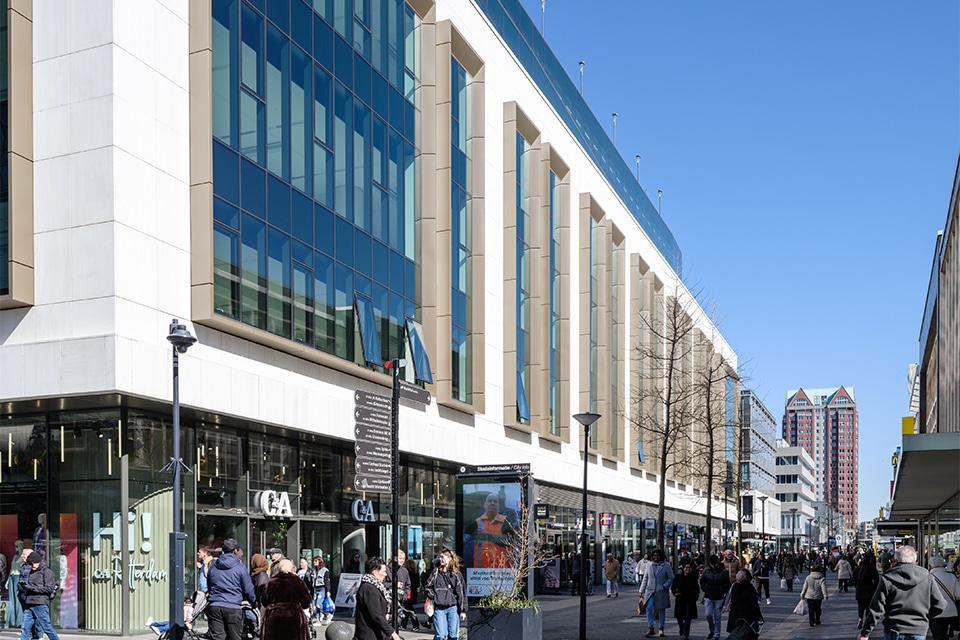
Final puzzle piece of Rotterdam reconstruction
In the heart of Rotterdam, a stone's throw from the Market Hall, stands the 70-meter-high OurDomain residential tower. It is a historically charged piece of Rotterdam: the bombing in 1940 completely destroyed everything here. Since then, there has been no construction on this spot. The residential tower is therefore considered the final piece of the puzzle of Rotterdam's reconstruction. The design refers to Rotterdam's sturdy reconstruction architecture, with the unusual facade cladding with whimsical print referring to the chaos after the bombing. As a sign of hope and resilience, in the evening the facade is a subtle beacon of light for the city.


"Really everything was taken into consideration when building this 24-story residential tower," puts Johan Andringa of Intal. "Not only did it have to be built on a postage stamp, right next to a busy road, but the historic site also provided the necessary challenges." The construction team, consisting of client Greystar, property developer Drees & Sommer Netherlands and contractor Stebru, together with Tangram Architects, worked out the construction in minute detail before even one shovel had been put into the ground. Intal hooked in at an early stage: "The design that the architect had in mind, and on which the municipality put a heavy stamp because of the historically charged part of Rotterdam, we started to work out a technically feasible design together with Stebru's plan developers. Bit by bit, from the very first moment, the correct dimensions were determined, materials and colors chosen and we worked out the repeating lines and spans in the building."

The power of a construction team
Aside from the full engineering in 3D, Intal's expertise paid off mainly in the development of the building's plinth. Andringa: "The curtain wall goes around the entire building, but expands in both height and depth, where you have to deal with an acoustic break. The spans, the size of the glass surfaces and the various corner twists also created challenges in the manufacturability of this facade. But that is the strength of participating early in a construction team: working everything out carefully, keeping in mind the aesthetic value, the budget, the technical manufacturability, the logistical challenges on site and the requirements and wishes of the municipality and local residents."

Successful realization
With inner-city construction, logistics is an essential part within the entire construction team, according to Andringa. "Here you really need all parties involved: you have to erect a 70-meter tower in a very small space, while the road next to it must not be closed and the load on the traffic network must be kept to a minimum. Then it is crucial to have a solid supply and assembly plan in place before you start. Intal has already handled this kind of project and works closely with the supplier of the HSB elements. We therefore opted for prefabricated construction and delivered the glazed windows just-in-time." Stebru is also an expert in complex inner-city developments. "This kind of collaboration process is essential for a successful realization," Andringa knows.
Suitable partner
With this building, another magnificent icon has been erected in Rotterdam, once again highlighting Intal's strength: the combination of large numbers of highly repetitive prefabricated window frames with complex engineering in a curtain wall for the plinth. In doing so, Intal seeks the power of partnerships and clearly offers significant added value even in large complex projects of this kind. "As a manufacturer and supplier of our own system, we are in an excellent position to tailor our widely applicable frame and curtain wall system to the project needs. Both functionally and aesthetically, but also with an eye for the project challenges that such an inner-city project entails. All facets, from noise loads to fire resistance and from wind and water tightness at high altitudes to logistical challenges, come to the fore in such a project. A reasonable test that we passed with flying colors," Andringa says proudly and concludes, "After the completion of OurDomain in Rotterdam, we started a similar project in The Hague with the same Stebru team: Frank is a Binck. Again, a location with historical value that is referenced with the project."



